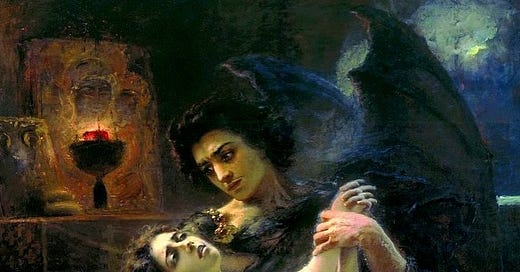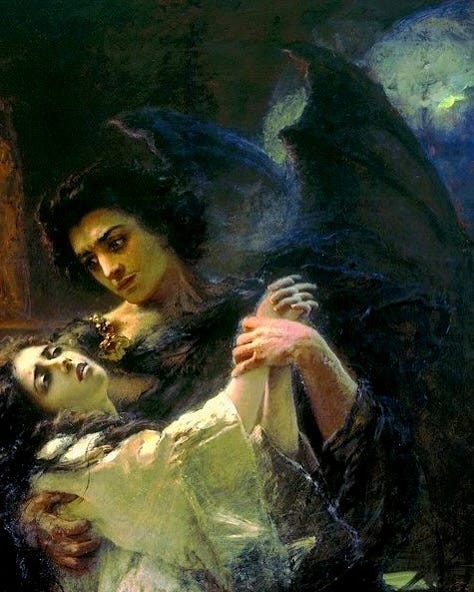KONSTANTIN MAKOVSKY - TAMARA AND THE DEMON, 1889
This intriguing painting explores the concepts of good and evil, inspired by Mikhail Lermontov’s poem “Demon”, which tells a story of a fallen angel roaming the earth consumed by resentment and solitude. The poem is a complex exploration into themes like the nature of evil, redemption, and the potential for love and empathy towards even the most damned souls.
The protagonist in the poem is a Demon who roams the Caucasus Mountains, tormented by miserable loneliness and hopelessness. Even though the Demon cannot die, he perceives his existence as an endless and prolonged suffering until he happens to see a beautiful young princess named Tamara dancing at her wedding. The demon is instantly captivated by her and decides to arrange the demise of her husband to assume his place.
Tamara is ultimately swayed by the Demon when she concludes that he is neither an angel nor a demon, but merely a tormented soul. The pair exchange a kiss, but the Demon’s lips are poison, and Tamara dies immediately. The poem ends with the Demon once again wandering the Earth, tormented and hopeless.
The artwork depicts the lovely Princess Tamara passing away in the embrace of the Demon. Makovsky portrays Tamara in her last moments of life. Her body is already slumping and lifeless, and her skin is taking the greyish-green tone that signifies death. In contrast, the figure of the Demon is significantly more enigmatic. He is portrayed as an attractive young man with tousled dark hair. Dark, bat-shaped wings emerge from his backside, revealing his demonic nature to the viewer. The Demon looks puzzled; a small crease between his eyebrows reveals his distress - the realization of Tamara’s death has just struck him.




